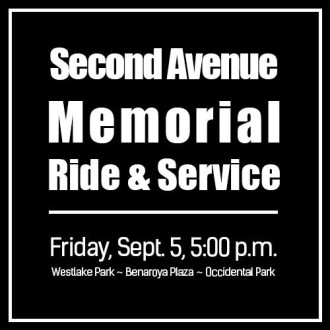 The death of Sher Kung on 2nd Ave has shaken up a lot of people whether they ride a bike or not. After all, so many people bike into downtown at the same time of day that it could have easily been anyone, and anyone’s loved one.
The death of Sher Kung on 2nd Ave has shaken up a lot of people whether they ride a bike or not. After all, so many people bike into downtown at the same time of day that it could have easily been anyone, and anyone’s loved one.
You have a chance to honor her life Friday evening by taking part in a memorial bike ride that meets at 5 p.m. at Westlake Park. The ride will move slowly to Benaroya Plaza near the fatal collision site for a short service and moment of silence that starts at 5:30. If you do not have a bike, you can meet the memorial there.
The ride will then continue to Occidental Park where people can learn how they can help to increase safety on downtown streets.
Again, our deepest condolences to Kung’s family and friends.
Kung’s death was the first person to die while biking in Seattle in 15 months, according to SDOT records. Two people were struck and killed in May 2013, including Darren Fouquette May 30 on Airport Way near the border with Tukwila and Lance David May 1 on E Marginal Way.
The city made it more than a year without a person on a bike dying, which is an impressive achievement. But many people were injured during that time, and it probably does not bring much solace to Kung’s friends and family. It’s a start, but it’s not good enough. We have a long way to go before we reach the city’s goal of zero traffic deaths and serious injuries by 2030.
Just ten days before a safer 2nd Ave
Just a couple hours after the memorial ride, the skinny 2nd Ave bike lane will close forever as city workers begin the final work needed to open the new protected bike lane in time for Monday morning.
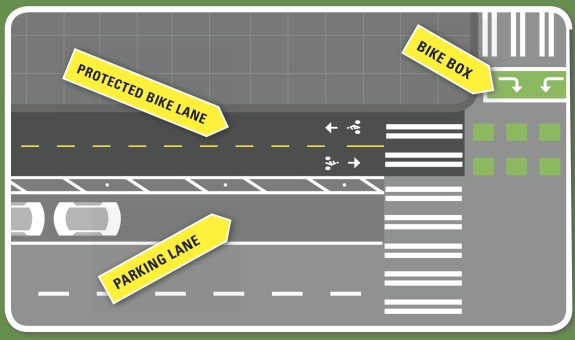
As we have been reporting for months (and urging for years), the city is in the midst of a safe streets project on 2nd Ave that will significantly upgrade the existing decade-old, paint-only bike lane squeezed between parked cars and moving traffic. The 2nd Ave bike lane is full of hazards, and cars and trucks often make left turns directly in front of people riding in the bike lane.
Currently scheduled to open Monday, the new bike lane will be protected from moving traffic by either a row of parked cars or a line of reflective plastic posts. At intersections where left turns are allowed, people biking and people making left turns in their cars will have separate signal cycles. So when someone on a bike has a green light, left turns have a red arrow and vice versa. So long as nobody runs a red light, the majority of turning conflicts should be eliminated.
The new bike and turn signals are already installed and hanging on poles at the site of last week’s fatal crash, but they are not yet ready to be switched on.
The city has been gearing up for protected bike lanes in downtown for a couple years now, and the 2nd Ave project is the first tangible result of those efforts.
“Last fall, [the City Council] took about a million from [Mike McGinn’s] proposed streetcar connector project and put it into the bicycle master plan,” said Councilmember Tom Rasmussen, chair of the Transportation Committee. That money was earmarked specifically for protected bike lanes in downtown.
The city also applied for and received millions of dollars in federal grants to design and build a network of protected bike lanes downtown, including routes on 4th, 7th and Pike or Pine. The current timeline to see those plans in action on the ground is 2016, though perhaps the city’s experience opening 2nd Ave on a quick timeline will help speed up the other projects.
“I think it speaks to the need for moving quickly on safety improvements,” incoming SDOT Director Scott Kubly told the Seattle Times while visiting the memorial for Kung Friday afternoon.
But as Dominic Holden at The Stranger reported this week, the city has been dramatically underfunding the Bike Master Plan ever since it was first passed in 2007:
Still, the council has quietly resisted [funding the bike plan]. In 2007, the city adopted the Bicycle Master Plan with an estimated $240 million in spending required in the first decade (not accounting for inflation). But seven years later, the city’s transportation department reports the council has spent only $42 million from its capital budget, less than one-quarter the funding the plan needs by now. Even accounting for a handful of tributary funds, the council funded only $11.5 million of the plan this year (the equivalent of $10 million in 2007 dollars), effectively underfunding it by roughly three-fifths.
In order to adequately fund the updated Bike Master Plan, the city would need to invest about $20 million per year. That’s a little less than double what has been invested in recent years.
In fact, the protected bike lane project is only this close to completion thanks to Mayor Ed Murray, who in May gave SDOT the mission to get the upgraded bike lane completed by the time Pronto Cycle Share launches (now scheduled for October 13). For a significant bike lane project like this in such a dense part of the city center, that is an extremely quick turn-around especially in Seattle where such changes usually get trapped in the notorious “Seattle Process.”
But it wasn’t fast enough. People have been warning about dangers using the 2nd Ave bike lane essentially since the day it opened. People reported 57 collisions on the street during the period from January 2007 to March 2013, Seattle Times reports. Of those, 16 were either at the intersection with University or in the block leading to it. Many more collisions undoubtedly went unreported.
We have known about the problem for years, and we have also known the solution: Protected bike lanes with separate signals.
Like any street change, installing bike lanes can get people worked up. And with traffic as bad as it is downtown, politicians were clearly worried about backlash if they proposed or supported a major upgrade to downtown bike lanes like the one now happening on 2nd. But delaying a clearly-needed safety improvements carries a serious price, and unfortunately Kung has paid it.
Below is a letter to Kung’s friends and family from the Seattle Bicycle Advisory Board:
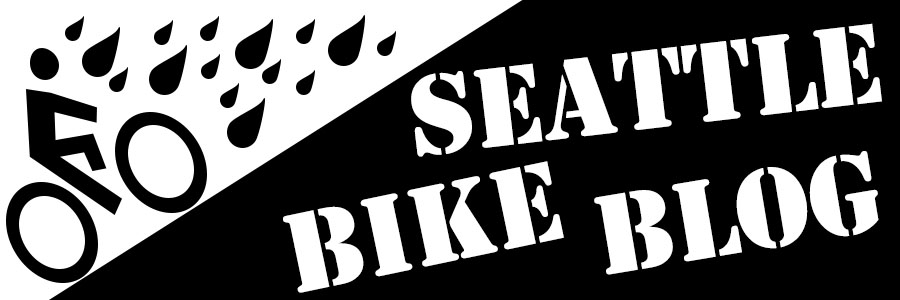
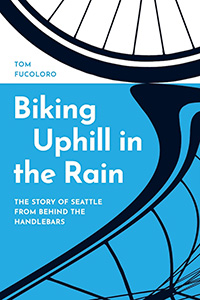








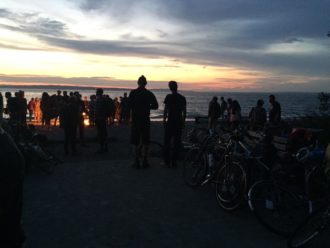

Comments
24 responses to “Kung died just ten days before a safer 2nd Ave + Memorial ride Friday”
It is great that this demonstration project was able to be implemented so quickly. Hopefully the City will be able to maintain that speed on iterating to further improve the safety of this facility.
For example, while “No Turn on Red” signs have been put up facing southbound traffic on 2nd, I don’t see any on the westbound streets.
Signs reminding drivers on 2nd that “Cyclists May Use Full Lane” would also be also be a useful addition to serve the cyclists who travel faster than will be safe on this narrow bi-directional lane.
“No Turn On Red” signs for cross streets are mandatory for projects using bicycle signal faces — no traffic, from the primary or the secondary street, may be allowed to make conflicting movements, including turns on red.
Installing signs doesn’t take long, maybe that’s part of this weekend’s work?
If the signs aren’t there Monday morning, I hope cycling advocates will be contacting Director Kubly personally to get them installed.
“if an agency opts to use bicycle signal faces under this Interim Approval, such use shall be limited to situations where bicycles moving on a green or yellow signal indication in a bicycle signal face are not in conflict with any simultaneous motor vehicle movement at the signalized location, including right (or left) turns on red.” (See http://mutcd.fhwa.dot.gov/resources/interim_approval/ia16/index.htm for more requirements.)
Have standard “Bicycle May Use Full Lane” signs been used anywhere in Seattle since they were approved in the 2009 MUTCD?
I can’t recall having seen any in the city. They’re one of the few pieces of bicycle infrastructure that actually have a relatively clear meaning to drivers. People on bikes may know the difference between a shared lane marking and a bicycle pavement marking, but people in cars are often mystified.
No idea how many work crews were on this, but I’m amazed how much SDOT got done in one weekend (including No Turn on Red signs on the intersecting westbound streets – at least the ones I saw this morning).
Having just looked at SDOT’s postcard on how to use the protected bike path, there’s another issue that I haven’t seen addressed in public.
It would appear that when bicycles have a green signal, motorists turning left off of second will have a red signal, but motorists continuing south on Second will have a green signal.
That would create a conflict between cyclists turning west across Second and drivers continuing south on Second. The city’s postcard says to use the experimental two-stage turn boxes, but then it shows a green bicycle signal.
A green bicycle signal means bicycles are clear to go through or turn.
If any turning movement from the bike facility is prohibited because of conflicting street traffic, you can’t use a green bicycle signal, you have to use green bicycle arrows showing the specific movements that bicycles are allowed to make. (See http://mutcd.fhwa.dot.gov/resources/interim_approval/ia16/figia16img_longdesc.htm for allowed methods of prohibiting particular turns due to conflicting traffic.)
If the postcard is accurate, the City is inviting liability the first time a southbound cyclist makes a right turn on a green bicycle signal, or a northbound cyclist makes a left turn on a green bicycle signal, either one into the face of southbound motorists with a green signal.
I would feel a lot better about the new Director’s opinions on cutting through the “Seattle process” if SDOT were reliably complying with published national standards. Tropes about the perfect being the enemy of the good are not a reasonable excuse for unsafe design.
I get they want this cycle track up quick and cheap, but why don’t they pour a curb for more permanent 2 way protected cycletracks around town? Even on Broadway many stretches of the cycle track have the plastic posts instead of poured curbs to keep cars out of the cycletrack. Street sweeping is usually an excuse for not better separating the lanes but a two-way cycletrack is ample room for a street sweeper (2 way cycletrack = 1 auto lane/vehicle width).
Cost of a curb (based on WSDOT 2014 unit bid for cement concrete traffic curb – which isn’t necessarily identical but should be close enough) is $158,000 per mile.
I’m very surprised to learn this is going to be a two direction bike lane. Isn’t that going to make it dangerous for bicycles traveling northbound versus cars turning southbound? They aren’t going to be looking for us…
Assuming everyone obeys the law and respects red lights, and assuming the City adds “No Turn On Red” signs to the intersecting westbound one-way streets, the turn conflicts shouldn’t be a tremendous issue with the two-way configuration.
I’m more concerned about the two-way configuration in light of how narrow the lane will be, and because of the speed difference between a commuter going down the hill and a Pronto cyclist going up the hill. If either person has to swerve to avoid an obstacle in the road, or to avoid someone walking in the bike lane, or to pass another cyclist, it’s going to be much scarier than the narrowest parts of the Burke-Gilman.
There are also growing numbers of e-bikes on Seattle streets.
They’re technically illegal on sidepaths, but realistically, they’re going to be using the cycletrack unless SDOT starts enforcing the ban.
The design should anticipate an e-bike going 18 mph northbound, overtaking that uphill Pronto rider, in the face of the downhill, southbound rider.
Shhhhhh!
That kind of critical thinking regarding two way cycle tracks is heresy.
All hail the two way cycle track!
From blog post above: “At intersections where left turns are allowed, people biking and people making left turns in their cars will have separate signal cycles. So when someone on a bike has a green light, left turns have a red arrow and vice versa. So long as nobody runs a red light, the majority of turning conflicts should be eliminated.”
[…] Seattle Bike Blog has details of the planned 2nd Ave cycle track: […]
[…] ← Kung died just ten days before a safer 2nd Ave + Memorial ride Friday […]
Is there any news yet about whether charges will be filed against the truck driver, for illegally turning across (vs. merging into) the bike lane?
You mean if he’s going to get a hundred dollar ticket for killing a person?
[…] “The alternative is Sher Kung,” he said, referring to the young mother and attorney who was killed while biking on 2nd Ave in August. […]
[…] costs of doing business. From Kenmore to Kirkland to Rainier Valley to Puyallup to West Seattle to downtown Seattle, people have gathered to honor victims of traffic collisions and to figure out how we can make sure […]
[…] this is the first death of a person on a bike in Seattle in 2015. It’s also the first death since Sher Kung died on 2nd Ave in […]
[…] McNamara, a member of Beacon Hill Safe Streets, recalled the death of cyclist Sher Kung, who was killed downtown on 2nd Ave ten days before protected bike lane upgrades were made on the […]
[…] Kung was killed biking to work in 2014 when someone driving a truck turned into her on 2nd Ave at University Street just ten days before the city’s protected bike lane upgrade was installed. […]
[…] game. People’s lives are on the line. Every day of delay is rolling the dice. Sher Kung died just ten days before the 2nd Ave protected bike lane was […]
[…] Kung was killed at 2nd and University in August 2014 just ten days before the dangerous paint-only bike lane on the street was upgraded to a protected bike lane. Though the person who turned the truck into her path had been texting around the time of the collision, he was not charged. […]